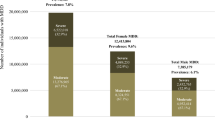Summary
The US, like many countries, has turned its public focus onto its healthcare system, with drug prices drawing particular atention. Expenditure trends indicate that drugs do not represent a large portion of the overall healthcare picture; the typical US consumer, however, feels these costs more personall y because large portions of outpatient drugs in the US are purchased with out-of-pocket funds. Using data trends for US expenditures, we contrasted projections in the year 2000 under the current US system relative 10 a strategic policy with full coverage of prescription drugs. Under this proposed scenario, drugs still captured just a small portion of overall healthcare expenditures, but with major shifting to private insurance and government programmes. Thus, as society increasingly views some level of healthcarc as a basic human right, effective policies for the healthcare system-including the drug sector-must balance competing regulalOry and market pressures.
Similar content being viewed by others
References
Blendon RJ, Edwards IN, Hyams AL. Making the critical choices. JAMA 1992; 267 (18): 2509–20
Altman SH, Rodwin MA. Halfway competitive markets and ineffective regulation; the American health care system. J Health Politics Policy Law; 1988: 13 (2): 323–39
Gold M, Chu K, Felt S, et al. Effects of selected cost–containment efforts:1971–1993. Health care Finac Rev 1993; 14 (3): 183–225
Boston Consulting Group. The contribution of pharmaceutical companies: what’s at stake for America. Boston: The Boston Consultin g Group Inc.,1993: 2–17
Sonnefeld ST, Waldo DR, Lemieux JA, et al. Projections of national health expenditures through the year 2000. Health Care Financ Rev 1991; 13 (1): 1–27
Donham CS, Maple BT, Levit KR. Health Care indicators. Health Care Financ Rev 1993; 14 (3): 249–81
Bootman JL, Townsend RJ, McGhan WF. Introduction to pharmeconomics, In: Bootman JL, Townsend RJ, McGhan WF. editors. Principles of pharmaeconomics. Cincinnati: Harvey Whitney Books Co., 1991: 2–11
Wertheimer AI, Grumer SK. Overview of international pharmacy pricing. PharmaEconomis 1992; 2 (6): 449–55
Rice T, Desmond K, Gabe J. The Medicare Catastrophic Coyerage Act: a postt–mortem. Health Affairs 1990; 9 (3): 7S–87
Dimasi J, Hansen RW, Grabowski HG, et al. Cost ofinnovation in the pharmaceutical industry. J Health Econ 1991; 10: 107–42
Pharmaceutical R&D: Costs. risks and rewards. US Office of Technology Assessment publication OTA–H–552. Washington, DC: US Congress, 1993
Grabowski H, Vernon J. A new look at the returns and risks to pharmaceutical R&D. Manage Sci 1990; 36 (7): 804–21
Butler S. Economics of health care reform. Am J Surg 1994; 167 (2): 236–40
Rumore MM. The decline in new drug development. Am Pharm 1992; NS32 (4): 73–8
Mattison N, Trimble AG, Lasagna L. New drug development in the United States, 1963 through 1984. Clin Pharmacol Ther 1988; 43: 290–301
Kaitan KI, Wash HL. Are initiativcs to speed the new drug approval process working? Drug Info J 1992; 26: 341–9
Avorn J. The elderly and drug policy:coming of age. Health Affairs 1990; 9 (3): 6–19
Cowan CA, McDonnell PA. Business,housesholds,and goverments:health spending, 1991,Health Care Financ Rev 1993: 14 (3): 227–48
Anderson G, Spitzer WO, Weinstein MC,et al. Benefits, risks, and costs of prescription drugs: a scientific basis for evaluating policy options, Clin Pharmacol Ther 1990: 48 (2): 111–9
Burner ST, Waldo DR, McKusick DR. Nutional health expenditureS through 2030. Health Care Financ Rev 1992; 14 (1): 1–29
Lazenby HC, Letsch SW. National health expenditures, 1989. Health Care Financ Rev 1990; 12 (2): 1–26
Leibowitz A, Manning WG, Newhouse JP. The demand for precription drugs as a function of cost–sharing. Soc Sci Med 1985; 21 (10): 1063–9
National Pharmaceutical Council, Pharmaceutical benefits under state medical assistance programs. Reston, VA: National Pharmaceutical Council Inc., 1993: 120;200
Adamcik BA. The consumers of health care. In: Fincham JE, Wertheimer AI, editors. Pharmacy and the U.S.Health Care System. Binghamton, NY: Haworth Press: 1991: 325–96
White House Domestic,Policy Council. The President’s Health Security Plan: the Clinton blueprint. New York: Time Books, 1993
Fuchs VR. The ‘competition revolution’ in health care. Health Affairs 1998; 7 (3): 5–24
Langwell K. Price controls: on the one hand and on the other. Health Care Financ Rev 1993; 14 (3):5–10
Enthoven AC. Managed competition: an agenda for action. Health Affairs 1988; 7 (3): 24–47
Navarro RP. Regulation of pharmaceutical prices: a managed care perspective. PharmacoEconomics 1993; 3 (3): 179–82
Fuchs VR. The health sector’s share of the Gross National Product. Science 1990; 247 (4942): 534–8
Schondelmeyer SW, Thomas III J. Trends in retail prescription expenditures, Health Affairs 1992 (3); 9 (3): 131–45
Sclar DA, Skaer TL. Pharmaceutical formulation and healthcare expenditures. PharmaEconomics 1992: 2 (4): 267–9
Bonk RJ, McGhan WF. Pharmaeconomic evaluation to assists prescription pricing. PharmacoEconomics 1993; 4 (2): 73–6
Fuchs VR. The ‘rationing’ of medical care. N Engl J Med 1984; 311 (24): 1572–3
Author information
Authors and Affiliations
Rights and permissions
About this article
Cite this article
Bonk, R.J., Myers, M.J. & McGhan, W.F. Drug Expenditures in a Balanced Strategy for Healthcare Policy. Pharmacoeconomics 7, 534–542 (1995). https://doi.org/10.2165/00019053-199507060-00007
Published:
Issue Date:
DOI: https://doi.org/10.2165/00019053-199507060-00007




